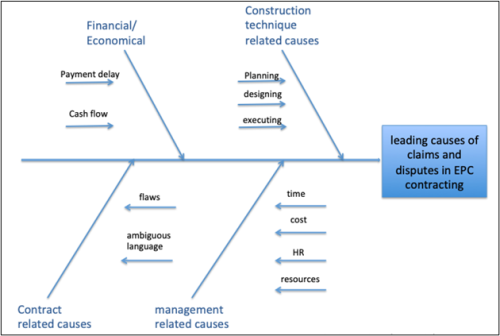Using Earned Value Management
FEATURED PAPER
By Claudio M Olivieri
Brisbane, Australia
ABSTRACT
Surveys reveal that problems with efficiency in the field often lead to payment reductions and delays. In turn, slow payments cause cash flow problems that reduce a construction business’ ability to finish work quickly, effectively stunting the growth of their business.[1] The “proposed” model aims to end the construction’s vicious cycle of “late payments and low productivity.” This research developed a solution that integrates the progress with the payment process. A “how-to” guide to close the interface loop between Owners and Contractors through an activity-based management approach supported by a robust data model. This “proposed” technique enables a simple payment system that ensures the Contractor is paid promptly for work performed and protects the Owner from defects in the work. The findings significantly improve payment timeframes from the current industry average of 83 days to 28 days. Considering the substantial benefits for every party, the author strongly advocates starting to act diligently in this respect.
Keywords: Governance and Integration, Stakeholder Expectations, Progress, Earned Value, Contracts, Procurement, Supply, Payment, Cash Flow, Databases
INTRODUCTION
“30% of all construction projects end in disputes, because no one is on the same page”[2] by the ARCADIS Global Construction Disputes Report 2019.
As stated in peer-reviewed research, “Unfortunately, far too many projects end up with disputes, claims, and counterclaims. HK&A published their CRUX Report (2020) that concluded:
- 1,185 projects with a combined CAPEX worth more than US$1.8 trillion analyzed.
- The cumulative value of sums in dispute exceeded US$48.6 billion.
- On average, claimed values reached almost 56% of project’s planned capital cost.
- Extensions of time claimed together would amount to 593 years.
- Resultant delays would typically extend original schedules by more than 71%.
- While changes in scope are still most often to blame, design-related problems are now entrenched near the top rankings.
- The other most often recurring causes are:
- poor management of third parties,
- inadequate contract management, and
- deficiencies in workmanship.”[3]
Recent research on the subject reveals four (4) main categories of claims leading to disputes.

Figure 1: Fishbone diagram showing leading causes of construction claims (Zhao, 2019)[4]
This technical paper focuses on integrating the progress with the payment process to mitigate some of the root causes identified in Figure 1. The EVM technique derived as an evolution from the relationship between Owners and Contractors to address the issues associated with the prompt payment of traded products that conformed to the terms and conditions agreed between both parties[5].
After thousands of years from its conception and centuries away from its formal implementation[6], the EVM technique still shows drawbacks. For example, there are challenges related to the interfaces across the different groups involved in the payment process between Owners and Contractors in the construction industry (i.e., engineering, procurement, construction, contracts, QA/QC, accounting). Not addressing these fatal flaws has led to costly time, money, and stress disputes.
More…
To read entire paper, click here
How to cite this paper: Olivieri, C.M. (2022). Integrating Physical Progress with a Prompt Payment Process Using Earned Value Management; PM World Journal, Vol. XI, Issue I, January. Available online at https://pmworldlibrary.net/wp-content/uploads/2022/01/pmwj113-Jan2022-Olivieri-integrating-physical-progress-with-prompt-payment-process-using-evm.pdf
About the Author

Claudio M Olivieri
Brisbane, Australia
![]()
Claudio M. Olivieri’s track record is in the mining, petrochemical, and energy resource industries. His 14+ years’ experience includes project controls for multi-disciplinary capital work projects in various roles, including planning and scheduling, cost estimation, cost control, contract administration, and procurement.
Claudio’s most recent experience is with Glencore APAC copper projects, where he provides complete project controls services. Before this, he served as a project controls engineer for Newcrest’s Lihir capital projects; Rio Tinto’s Gove sustaining capital works program; Auctus Resources Mungana process plant builds; and WDS/CPECC JV for the Arrow DomGas project. Claudio has also undertaken estimating roles such as Rio Tinto’s Mount Pleasant Coal Mine Pre-feasibility and Feasibility Studies; Licella’s Biomass to Biocrude FEED study, Queensland; QGC’s Curtis LNG FEED study. Upon arrival in Australia, he also occupied a combined estimator and cost control role for the Wafi-Golpu project in PNG.
Claudio’s communication skills are excellent with internal and external stakeholders. In addition, he is proficient in QUEST, CMS, MS Project, Primavera P6, and a broad selection of ERP, document control, and engineering software.
Claudio holds a Bachelor of Engineering (Chemical) from the Buenos Aires Institute of Technology (ITBA) and a Diploma of Project Management from Engineers Education Australia. He is an active member of Engineers Australia (EA), the Association for the Advancement of Cost Engineering (AACE), and a committee member of the Australian Cost Engineering Society (ACES). Currently, Dr. Paul D. Giammalvo is mentoring him.
Claudio can be contacted at oliviericlaudio@hotmail.com
[1] Wolfe Jr, S. (2020, April 30). 2020 Report: Construction suffers from wasted time & slow payment. Retrieved September 30, 2021, from Levelset: https://www.levelset.com/blog/2020-report-construction-wasted-time-slow-payment/
[2] From AEC Profiles. (2019). 30% of construction projects end in dispute. Retrieved from AEC Profiles: https://www.aecprofiles.com/30-percent-of-construction-projects-end-in-dispute
[3] From PTMC Team, & Giammalvo, P. D. (2021). Project controls/PMO handbook of “best tested and proven practices”.
[4] From Zhao, W. (2019). The root cause of claims and disputes in construction industry and solution analysis. PM World Journal, 8(5). https://pmworldlibrary.net/wp-content/uploads/2019/06/pmwj82-Jun2019-Zhao-root-cause-of-claims-and-disputes-in-construction.pdf
[5] From Giammalvo, P. D. (2019). Activity based costing (ABC) – The other side of the earned value coin? PM World Journal, 8(2). https://pmworldlibrary.net/wp-content/uploads/2019/02/pmwj79-Feb2019-Giammalvo-Activity-Based-Costing.pdf
[6] From Geneste, S. (2019). The true origins of EVM: A historical approach to scheduling and incentive schemes. PM World Journal, 8(9). https://pmworldlibrary.net/wp-content/uploads/2019/10/pmwj86-Oct2019-Geneste-the-true-origins-of-evm.pdf









